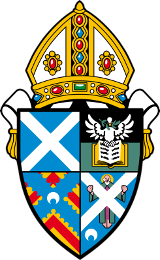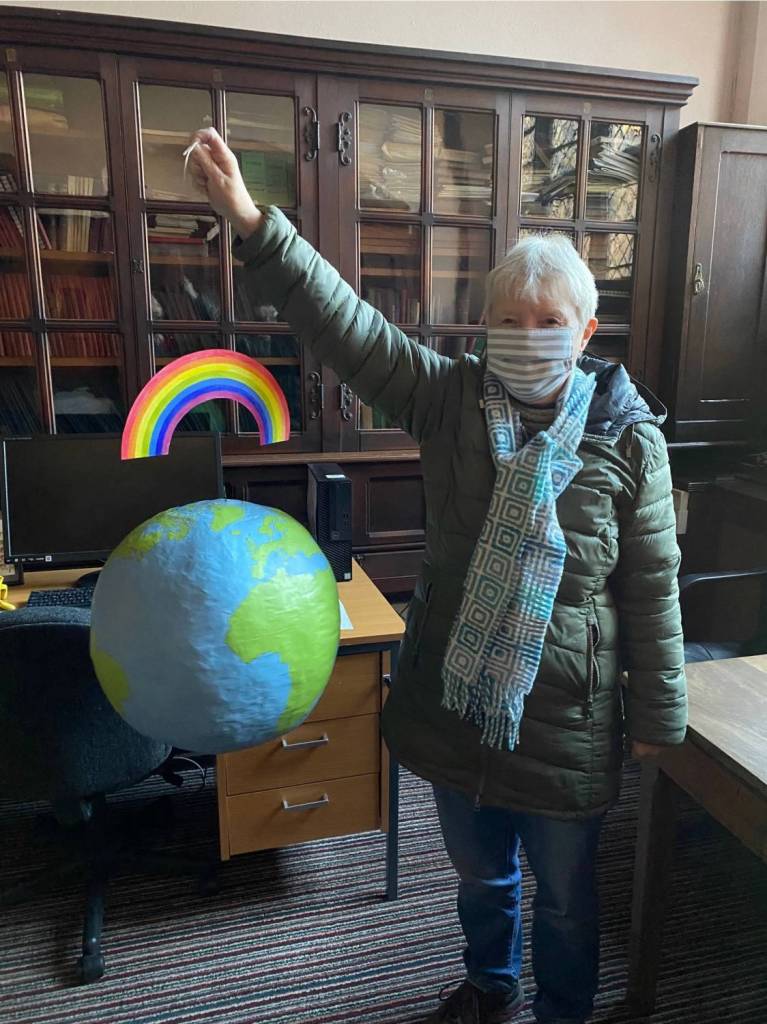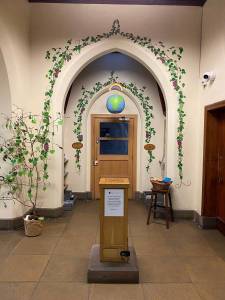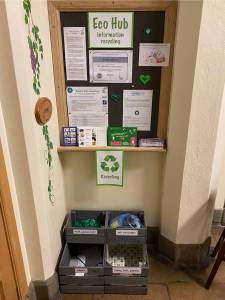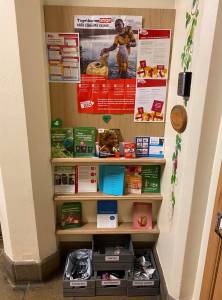Our Eco Congregation Story
The cathedral became a member of Eco Congregation Scotland (ECS) in 2007. Led by long-time fair-trader Pamela Robertson we began somewhat tentatively, but found ourselves supported with advice and encouragement from ECS in Edinburgh. We were delighted to discover a network of congregations of all denominations in and around Perth which met together several times a year as Perth Eco Network Group. PENG organised excellent talks, workshops and visits, e.g., to local recycling centres and generally spurred us on. Hopefully that group’s activities will be revived once Covid restrictions are fully lifted, as there seems to be plenty of interest.
Our first task was to carry out the ECS environmental audit to identify and prioritise aspects of our cathedral life that could readily be improved. We already had a Sunday Traidcraft stall and displayed posters highlighting fair trade and green issues on our noticeboard, but now things began in earnest. People were encouraged to reduce, re-use and recycle everything they could and we made this as easy as possible by clearly labelling the bins. We wrote articles for the cathedral magazine, put up notices about turning off lights and taps and closing doors. We changed our office supplies to recycled paper, our coffee and tea to fairly traded products, our kitchen cleaning products to greener ones and tried to use local suppliers and tradespeople whenever we could. We asked the intercessors to include environmental concerns in their weekly prayers and those organising discussion groups and retreats to keep creation in mind.
 As time went on the congregation grew increasingly interested in eco matters and would raise queries about alternatives to weed-killer or paper towels, how to make the best compost, what to do with old nail varnish, where to dispose of pizza boxes (blue or brown bin?) what should happen to half-empty tins of paint etc. Perth & Kinross Council’s Waste Awareness department got used to our regular requests for information and when Zero Waste Scotland set up their pilot project in Perth a cathedral representative was invited along to the launch.
As time went on the congregation grew increasingly interested in eco matters and would raise queries about alternatives to weed-killer or paper towels, how to make the best compost, what to do with old nail varnish, where to dispose of pizza boxes (blue or brown bin?) what should happen to half-empty tins of paint etc. Perth & Kinross Council’s Waste Awareness department got used to our regular requests for information and when Zero Waste Scotland set up their pilot project in Perth a cathedral representative was invited along to the launch.
Thanks to a generous grant from the Mushroom Trust the garden has recently seen a huge improvement. It is more accessible and much more eco friendly with a lovely wildlife area and raised beds for use by the primary school children (as soon as they are allowed to venture out again). Although situated on a busy street corner it offers a welcome green space to sit quietly or enjoy a picnic and was appreciated by many of those living in nearby flats during several Covid lockdowns, as well as by our summer visitors.
Over the past 14 years we have been proud to receive two Eco-congregation plaques, most recently a silver award highlighting our care for creation in the key areas of spiritual life, practical work and global living. The assessors saw that worship, prayer and study groups addressed environmental themes and commended the garden work, our link with St Ninian’s Episcopal Primary School and the wider community, our long-standing support of fair trade and our recent improvements in energy efficiency.
We continue to keep God’s creation at the heart of our cathedral life and last year, motivated in part by the SEC’s Climate Action initiative and also to link in with COP26, it was decided to create a permanent Eco-hub in the cloisters. Shelves were installed to hold information leaflets, flat-pack wooden boxes were bought and built as receptacles for the various items we collect for recycling. These now include stamps, blister packs, old spectacles and milk bottle tops, all of which are recycled to benefit various charities.
A mural of vine leaves and grapes was painted around the archways to tie in with the many biblical references to vines, vineyards, grapes and wine and the symbolic meaning contained in them. We are greatly indebted to Frazer Abbot, a Perth based sign-writer, who created such a beautiful artwork which has enhanced the Eco-hub enormously. The papier-mâché globe you can see in the accompanying photographs was made around the form of a beachball which, once deflated, was removed through a hole in the top. This was then patched over and the continents, oceans, seas and islands were painted onto it. A rainbow was suspended above the globe and the two objects were hung inside the archway leading into the Eco-hub.
We’re currently exploring possible grants to help with the cost of installing some secondary glazing in the offices to reduce heat loss. Our efforts to make the cathedral more comfortable and energy efficient continue, but improving the environmental footprint of our vast, beautiful, but oh so draughty A-listed building will never be easy. The heating and lighting have both been upgraded with radiator reflectors and LED lights installed throughout. Any kind of alternative energy generation has its problems for a listed building in a conservation area, but we are exploring options here too and hope eventually to find something manageable.
Margot Dunnachie and Wendy Duncan
